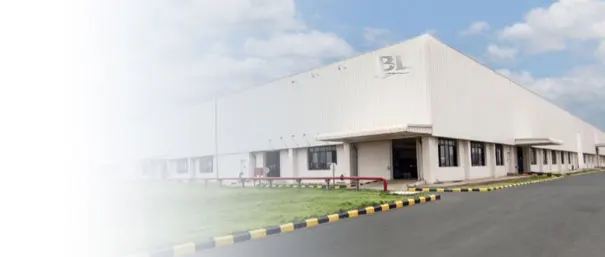Which is Better: 304L or 316L Stainless Steel?
Determining whether 304L or 316L stainless steel is “better” depends entirely on the specific requirements of the application, particularly the operating environment and budget constraints. Both are excellent austenitic stainless steels with low carbon content (indicated by the “L”), offering good weldability and formability. However, they differ significantly in their chemical composition and, consequently, their performance characteristics, especially corrosion resistance.


The primary difference lies in the addition of Molybdenum (Mo) to the 316L grade, typically around 2-3%. Molybdenum significantly enhances the material’s resistance to corrosion, particularly against chlorides (like salt water, de-icing salts) and various industrial chemicals, and improves resistance to pitting and crevice corrosion. 316L also generally contains slightly more Nickel than 304L stainless steel.
Comparison Table: 304L vs. 316L
| Feature | 304L Stainless Steel (UNS S30403 / 1.4307) | 316L Stainless Steel (UNS S31603 / 1.4404) |
|---|---|---|
| Primary Alloying Elements | ~18% Cr, ~8-10.5% Ni, Max 0.03% C | ~16-18% Cr, ~10-14% Ni, ~2-3% Mo, Max 0.03% C |
| General Corrosion Resistance | Good (Atmospheric, food/beverage, many chemicals) | Excellent (Superior to 304L, especially in harsher environments) |
| Chloride / Pitting Resistance | Moderate (Susceptible in marine or high-chloride environments) | Significantly Better (Due to Molybdenum content) |
| Weldability | Excellent (Low carbon prevents sensitization) | Excellent (Low carbon prevents sensitization) |
| Formability | Excellent | Very Good (Slightly less formable than 304L) |
| Strength | Good | Slightly higher than 304L at room and elevated temperatures |
| Cost | Lower | Significantly Higher (Due to Nickel and Molybdenum content) |
| Common Applications | Food processing, kitchen equipment, architectural trim, chemical tanks (mild conditions), cryogenic vessels. | Marine hardware, chemical/pharmaceutical equipment, medical implants, pulp & paper industry, coastal architecture, wastewater treatment. |
Conclusion: Application Dictates the Choice
-
Choose 304L if:
- The application involves exposure to general atmospheric conditions, fresh water, food products, or mild chemicals.
- Welding is required, but the environment is not high in chlorides.
- Cost is a primary constraint.
-
Choose 316L if:
- The application involves exposure to salt water, brine, de-icing salts, or aggressive industrial chemicals (especially chlorides).
- Superior resistance to pitting and crevice corrosion resistance is required.
- The component will be used in pharmaceutical or medical applications requiring high purity and corrosion resistance.
- The higher cost can be justified by the need for enhanced durability and longevity in a corrosive environment.
In essence, 316L stainless steel offers superior corrosion resistance, particularly against chlorides, due to its molybdenum content, but comes at a higher cost. 304L provides excellent value and performance for a wide range of less demanding applications. Neither is inherently “better”; the “better” choice is the one that cost-effectively meets the service requirements of the specific application.
Which is better, 304L or 316L stainless steel? — This article provides a practical buyer‑focused overview with specifications, selection tips, and on‑site considerations. Explore related topics: blog.
Key Specifications and Standards
- Standards: ASTM / EN / JIS (e.g., ASTM A240/A36, EN 10088/10025, JIS G4304/G3131).
- Surface options: 2B, BA, No.4, HL, mirror; galvanized (electro / hot‑dip).
- Processing: hot‑rolled, cold‑rolled, annealed & pickled, welded or seamless.
- Typical services: slitting, shearing, cut‑to‑length, drilling, beveling, deburring.
- Documentation: MTC, CO, packing list with net/gross weight and heat numbers.
Typical Applications
Construction, machinery, automotive, energy, enclosures and fencing, food equipment (for stainless), and general fabrication. Match grade and finish to corrosion, strength, and appearance requirements.
Selection Guide
- Use certified material with Mill Test Certificate (MTC).
- Confirm standards (ASTM/EN/JIS) and tolerances per drawing.
- Match surface finish to application (2B/BA/No.4/galvanized).
- Specify dimensions and acceptable deviation upfront.
- Plan packaging and corrosion protection for transit.
Processing, Packaging and Logistics
We adopt edge protection, waterproof wrapping, rust‑inhibiting paper, fumigated pallets, and strapping suitable for sea freight. Loading photos and weight lists are provided for each shipment.
FAQs
Q: What lead time can I expect?
A: Typically 7–15 days ex‑works for standard sizes; custom processing may extend the schedule.
Q: Can you provide cut‑to‑size service?
A: Yes. We slit, shear, cut, drill, bevel and deburr to drawing to reduce waste and speed installation.
Q: How do you ensure quality?
A: Incoming inspection, process control, and final inspection with traceable heat numbers; third‑party inspection is available.
Q: Do you support small trial orders?
A: We support pilot quantities with consolidated shipping to control cost.
All values are typical and for guidance only; confirm with the datasheet and purchase order before production.
Related products: view details.
Related products: view details.





